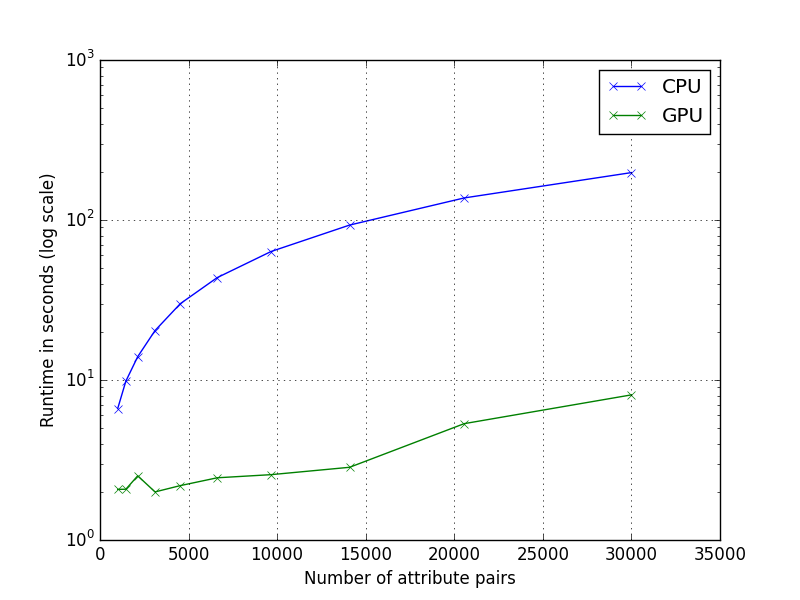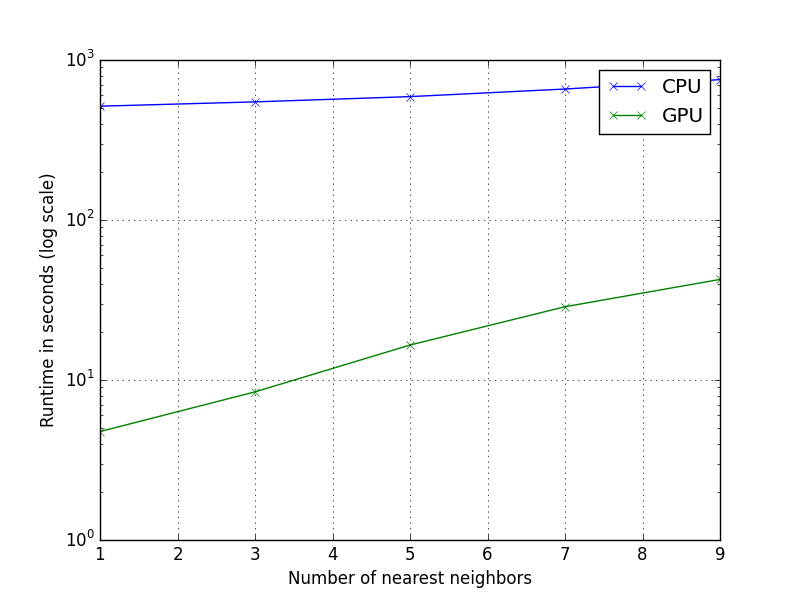We measure the runtime of two implementations of the VizRank algorithm:
- a single core CPU implementation written in C
- a GPU implementation written in CUDA
We found the GPU implementation to be up to 100 times faster than the CPU implementation, depending on the parameters (size of the dataset and number of attribute pairs to score).
Input:
- X: NUM_EXAMPLES x NUM_ATTRS matrix; the dataset
- Y: NUM_EXAMPLES vector; the class labels
- P: NUM_PAIRS x 2 matrix; pairs of attributes to score
- NUM_NEIGHBORS: int; the number of neighbors in kNN algorithm
Output:
- S: NUM_PAIRS vector; the VizRank score for each pair in P
Psedocode:
S = []
for each attribute pair attr1, attr2 in P:
score = 0
for each example i:
neighbors = list of NUM_NEIGHBORS nearest neighbors of example i
when taking only attr1 and attr2 under consideration
score += number of neighbors with same class label as example i
S.append(score)
- main.py: Python reference implementation. This is extremely slow and does not appear on the graphs.
- main.c: C implementation running on one core.
- main.cu: CUDA implementation parallelized over pairs of attribute (first loop in pseudocode).
The outputs of all three implementations are identical.
The benchmark is performed on a i7 3770 CPU and GTX Titan GPU. We are measuring the execution time of the entire program, which includes loading the data into CPU and GPU memory.
We first plot CPU and GPU runtimes while varying the number of attribute pairs to score. The GPU implementation is up to 25 times faster.
NUM_ATTRS = 1000
NUM_EXAMPLES = 1000
NUM_NEIGHBORS = 5
NUM_PAIRS = 1000 .. 30000
Here we plot CPU and GPU runtimes while varying the number of examples in the dataset. The GPU implementation is up to 35 times faster.
NUM_ATTRS = 1000
NUM_EXAMPLES = 100 .. 3000
NUM_NEIGHBORS = 5
NUM_PAIRS = 20000
Lastly, we plot CPU and GPU runtimes while varying the number of nearest neighbors. The GPU implementation is from 20 to 100 times faster.
NUM_ATTRS = 1000
NUM_EXAMPLES = 2000
NUM_NEIGHBORS = 1 .. 9
NUM_PAIRS = 20000


